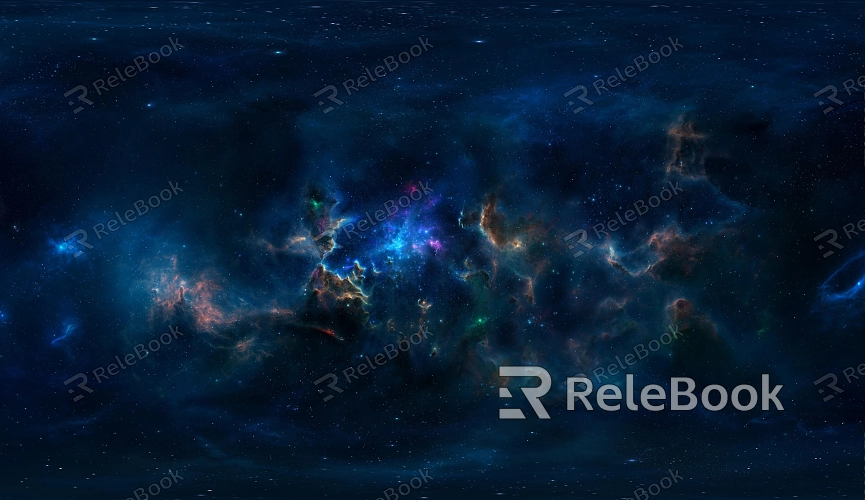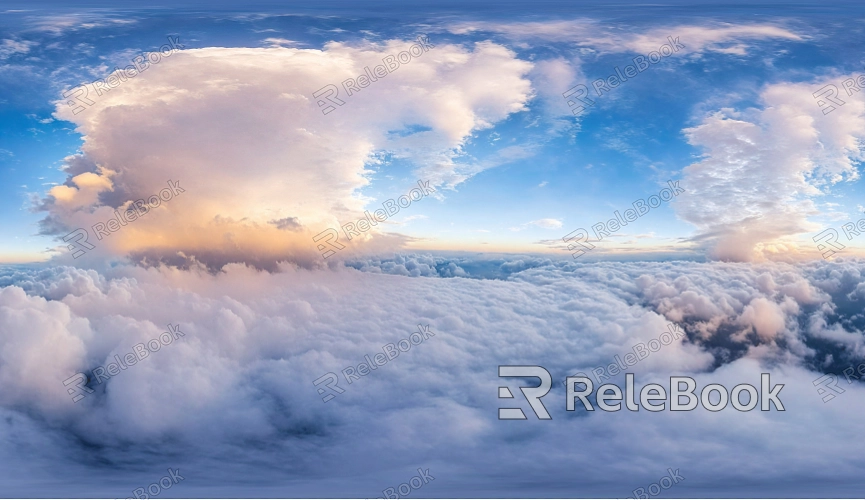Can I Use Sky Texture HDR for Indoor Lighting in 3D Scenes
In architectural visualization and virtual reality scene creation, most 3D software like Blender, 3ds Max, and Cinema 4D supports the use of HDR sky textures. However, can these sky texture HDRs be used for indoor lighting? This article explores the topic in detail, offering practical tips and advice for designers.

1. What is Sky Texture HDR?
A Sky Texture HDR (High Dynamic Range) is a file format used to capture and display realistic lighting. These files contain more brightness information than standard images, allowing for more accurate representation of natural light changes. HDR has become the go-to option for many 3D designers when simulating real-world lighting because of its wide dynamic range. In indoor lighting design, HDR textures can bring balanced, natural light from the outside into the scene, allowing for more realistic light and shadow effects.
2. Advantages of Using Sky Texture HDR
Enhances Realism
The primary benefit of sky texture HDRs is their ability to capture the sun and sky’s lighting effects with high dynamic range accuracy. This is crucial in architectural interior renderings, as it makes the lighting entering indoor spaces appear more natural.
Simplifies Lighting Setup
Using HDR sky textures can reduce the need for manually setting up multiple light sources. The built-in environment lighting in HDR images is evenly distributed across the scene, simplifying the setup process, especially for projects that require quick renderings.
3. Application Across Different Software
Blender
In Blender, HDR textures are typically used for the world background to create environmental lighting. For indoor scenes, you can apply the HDR file to the environment background, allowing light to enter the room through windows or openings. This way, even indoor scenes can achieve a natural lighting effect.
3ds Max
In 3ds Max, HDR sky textures can be applied through the “Environment Map” option in V-Ray or Corona Render. Similar to Blender, light from the HDR texture can be directed into an interior space through windows, enhancing the realism of the lighting.
Cinema 4D
Cinema 4D supports HDR sky textures for environmental lighting through renderers like Octane or Redshift. In indoor scenes, combining HDR textures with global illumination allows you to achieve complex light reflection and refraction effects easily.

4. Maximizing the Use of HDR Textures in Indoor Scenes
Control Light Entry
When using HDR textures indoors, it's often not about applying them directly to the entire scene but rather controlling how light enters through doors, windows, or skylights. This ensures that light only hits the necessary areas, preventing issues like overexposure or underexposure.
Adjust Exposure
Since HDR textures contain a wide dynamic range, exposure settings need to be carefully adjusted during rendering. Improper exposure can cause scenes to appear too bright or too dark. Lowering the exposure in indoor settings helps ensure the HDR lighting doesn’t overpower the scene.
Combine with Artificial Lighting
While HDR textures can provide natural ambient light, it’s usually necessary to supplement with artificial light sources indoors to fill shadow areas or enhance specific lighting effects. This combination can elevate the overall lighting of an indoor scene, blending the advantages of natural and artificial light for greater control and balance.
5. Avoiding Common Issues
Uneven Light Distribution
When using sky texture HDR, if the scene lacks windows or openings, the light may become too concentrated in certain areas, leading to uneven lighting. To fix this, you can adjust the scene layout or introduce additional light sources to balance the lighting.
Increased Render Times
HDR textures involve extensive light calculations, particularly in large scenes, which can significantly increase render times. To balance render quality and time, consider simplifying the resolution or detail of the HDR texture and fine-tuning the global illumination settings.
6. The Future of HDR Sky Textures
As 3D software and rendering technologies advance, the use of HDR textures will become even more widespread. Designers can expect to see more optimized tools and algorithms that handle HDR textures more efficiently, especially in indoor scenes. The use of HDR to create realistic lighting effects will likely become an industry standard, pushing the quality of interior rendering to new heights.
Using sky texture HDR for indoor scenes not only enhances lighting realism but also simplifies the lighting setup. However, designers must carefully control light entry, adjust exposure, and combine HDR with artificial lighting to achieve the best results. By skillfully applying HDR textures, designers can create more vivid and natural lighting effects for indoor renderings.
If you’re looking for high-quality HDR image resources, 3D textures, SketchUp models, or 3ds Max models to create your projects and virtual scenes, Relebook offers a rich selection to help you achieve outstanding visual effects in your work.

